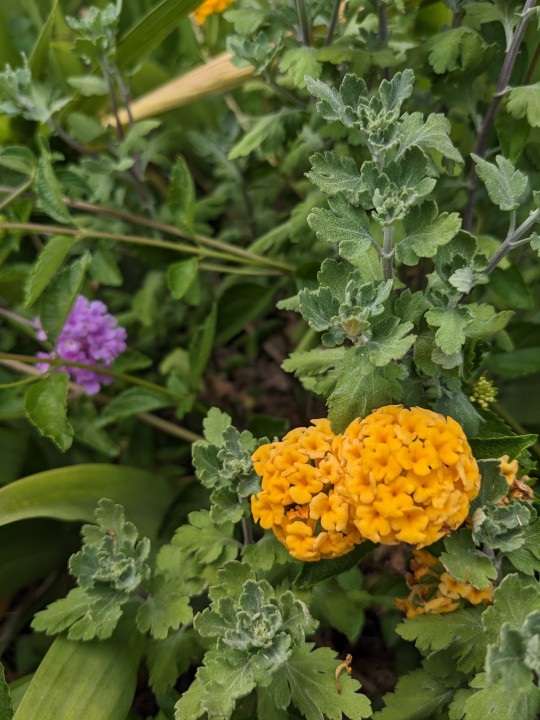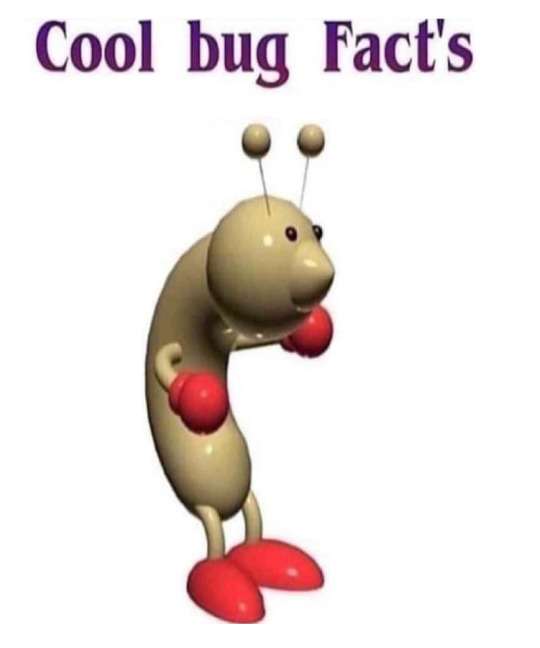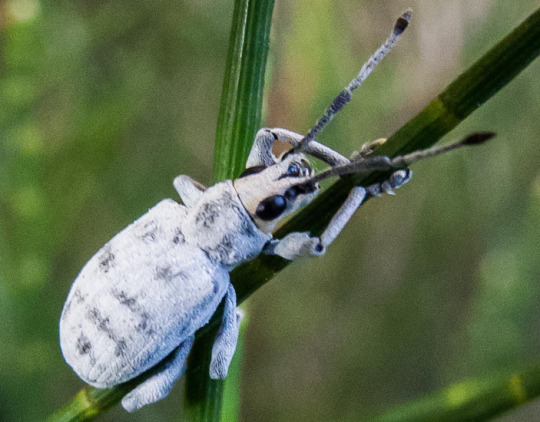#common lantana
Text
Lantana Flowers are Beautiful and Come in Many Colors
Lantana Flowers are Beautiful and Come in Many Colors features a particularly brightly colored type of lantana flowers that the author/artist found growing out in the country. It discusses the pros and cons of this plant in central Florida.
Resplendent
Lantana (Lantana camara) flowers tend to be a favorite amongst gardeners due to their variety of colors and their hardiness. Some people also know these beauties as common lantana, red sage, Spanish flag, or West Indian lantana. It comes in quite a few serovars that have different color combinations and varying levels of color intensity. I’m not sure which type this one is, but in my…

View On WordPress
#beautiful flowers#beautiful lantana#colorful flowers#colorful lantana#common lantana#fall flowers#Florida flowers#flower photographs#flower photography#flowers#invasive plants#lantana#lantana flowers#lantana photographs#nonnative plants#photography#red sage#Spanish flag#West Indian lantana
13 notes
·
View notes
Text

ランタナ(9月20日) #路傍の植物園
common lantana (Lantana camara)
lantana pospolita
3 notes
·
View notes
Photo

Fire
What do you think about my pic?
#West Indian Lantana#common lantana#verbena#shrub#blooming#red#orange#Clovis#California#original photography#travel#vacation#USA#West Coast#evening light#flora#nature#green#downtown#photo of the day#summer 2022#What do you think about my pic?#leaves#bloom#flower#close up#detail
3 notes
·
View notes
Text

Lantana camara 'Buttercup' / 'Buttercup' Common Lantana
#Lantana camara 'Buttercup'#Lantana camara#Buttercup common Lantana#Buttercup Lantana#Common Lantana#Lantana#Flowers#Nature photography#Home
1 note
·
View note
Text
“Godot”
Godot
Common lantana /
and stray cat wait … but /
but not for each other.
.
.
#godot #cat #lantana #wait #common #stray #photo #poem #poetry #haiku #senryu #oldnorthknoxville #davidebooker #october #wednesday #101922 #2022

View On WordPress
#101922#cat#common#David E. Booker#Godot#haiku#lantana#October#Old North Knoxville#photo#poem#poetry#stray#Wednesday
2 notes
·
View notes
Text

Robin Rajan
Danaus genutia(common tiger) butterfly on lantana flower, oriental garden lizard in the background.
Location: Parasuvaikal,lndia
22 notes
·
View notes
Text
Witchcraft Plant and Herb safety

🦋Research what plants you ingest and put into your teas. Some plants/herbs don't go together and become toxic
🦋Research what herbs you are turning to make sure it's not toxic [eg: poison ivy]
🦋Do not ingest any herbal remedies without consultation with your doctor and/or Herbalist
🦋Unless you are 100% certain what you have foraged is the correct plant put it back
🦋delightingintragedy's post on what oils to avoid while pregnant

Some toxic and poisonous plants
Abrus precatorius - Crab’s eye, Gidee gidee, Jequirity bean, Rosary bean
Aconitum species - Monkshood, Wolf’s bane
Asclepias curassavica - Red-headed cotton bush
Asclepias fruiticosa - Gomphocarpus fruiticosa, Swan plant
Asclepias physocarpa - Balloon cotton bush
Acokanthera species - Bushman’s poison
Atropa belladonna - Belladonna, Deadly nightshade
Brugmansia species - Angel’s trumpet
Casabella thevetia or Thevetia peruviana - Lucky nut, Yellow oleander
Cestrum diurnum - Day-blooming cestrum, Day jessamine
Cestrum nocturnum - Lady of the night, Night jessamine
Colchicum autumnale - Autumn crocus, Crocus, Meadow saffron
Conium maculatum - Hemlock
Consolida species - Larkspur
Convallaria majalis - Lily-of-the-valley
Corynocarpus laevigatus - New Zealand laurel, Karaka nut
Cycas species - Cycad, Zamia
Daphne species - Daphne, Garland flower, Lilac daphne, Mezereon, Rose daphne, Spurge laurel, Winter daphne
Datura species - Angel’s trumpet
Datura metel - Downy thorn apple, Horn of plenty
Datura stramonium - Common thorn apple, Jamestown weed, Jimson weed
Delphinium species - Delphinium
Dieffenbachia - Dumb cane
Digitalis species - Foxglove
Duranta erecta/Duranta repens - Golden dewdrop, Sky flower
Euphorbia species - Euphorbia, Spurge
Gloriosa superba - Climbing lily, Glory lily
Gomphocarpus fruiticosa - Asclepias fruiticosa, Swan plant
Gomphocarpus physocarpus - Asclepias physocarpa, Balloon cotton
Helleborus species - Christmas rose, Corsican Hellebore, Easter rose, Hellebore, Lenten rose
Hyoscyamus niger - Black henbane, Henbane
Jatropha multifida - Coral plant, Physic nut
Laburnum species - Golden chain tree, Golden rain, Laburnum, Scotch laburnum
Lantana camara - Lantana, Shrub verbena
Lepidozamia species - Cycad, Zamia
Lobelia species - Cardinal flower, Lobelia
Macrozamia species - Cycad, Zamia
Melia azedarach - Bead tree, Cape lilac, Chinaberry, Persian lilac, Rosary tree, White ceda
Nerium oleander - Oleander, Rose laurel
Oenanthe crocata - Water dropwort, Hemlock
Ornithogalum species - Common star of Bethlehem, Chincherinchee, Giant chincherinchee, Star of Bethlehem
Rhodomyrtus macrocarpa - Cooktown loquat, Finger cherry, Wannakai
Ricinis communis - Castor oil plant
Solanum dulcamara - Bittersweet, Climbing nightshade
Solanum nigrum - Black nightshade, Common nightshade
Solanum pseudocapsicum - Christmas cherry, Jerusalem cherry, Winter cherry
Stropanthus species - Corkscrew flower, Spider tresses, Stropanthus
Thevetia peruviana or Casabella thevetia - Lucky nut, Yellow oleander
Toxicodendron succedaneum - Rhus, Rhus tree, Wax tree, Poison sumac
Veratrum species - False hellebores
Golden dewdrop
Black bean tree
Poison ivy
Strychnine tree
Gympie gympie
Asparagus Fern (asparagus plumosus) (sprengeri)
Avocado (persea americana)
Blue Gum (eucalyptus globulus)
Buddist Pine (poddocarpus Macrophyllus)
Cacti :Bunny Ears (opuntia microdasy’s alkispina)
Column (cereus peruvianus)
Rat’s Tail (aporocactus flagelliformis)
Sunset (lokwia famatimensis)
Caladium (Angel’s Wings)
Century Plant
Crown of Thorns (euphorbia milii splendens)
Cyclamen
Dieffenbachia
Holly (ilex)
Ivy :Cape (tenecio macroglossus)
(hedera helix)
(senecio mikanioides)
Glacier (hedera helix glacier)
Gloire de Marengo (hedera canariensis)
Needlepoint (hedera helix sagittlae folica)
Jerusalem Cherry (solanum pseudocapsicum)
Mistletoe (phoradendron flavescens)
Philodendron :Arrowhead (syngonium podophyllum)
Black Gold ( ph. melanochryson)
Devil’s Ivy (Pothos) (scindapsus aureus)
Elephant’s Ear (philodendron hastatum)
Fiddle Leaf (ph. pandurae forme)
Green Gold (syngonium podophyllum)
Marble Queen (scindapsus aureus)
Ornamental Pepper (capsicum annuum)
Silver Vine (scindapsus pictus)
Split Leaf (monstera delicosa)
Sweetheart Vine (philodendron scandens)
Red (hemigraphis colorata)
Umbrella Plant (cyperus)
Azalea (azalea indica)Bleeding Heart (dicentra formosa)
Calla Lily (zantedeschia aethiopica)
Carnation (dianthus caryophyllus)
Castor-oil plant (ricinus communis)
Chinese or Japanese Lantern (physalis)
Chrysanthemum
Clematis
Crocus (colchicum autumnale)
Daffodil (narcissus)
DelphineumGladiola (bulb)
Hyacinthe (hyacinthus orientalis)
Iris
Jonquil (narcissus)Morning Glory (ipomaea tricolour)
Narcissus
Oleander (nerium oleander)
Pansy (seeds) (viola tricolour)
Peony (root) (paeonia officinalis)
Primrose (primula)
Sweet Pea (lathyrus odoratus)
Sweet William (dianthus barbatus)
Potato (green patches on tubers & above ground part)
Rhubarb leaves
Tomato greens
Black Locust (robinia pseudoacacia)
Buckthorn (rhamnus cathartica)Elderberry (not berries)
Horse Chestnut (aesculus hippocastanum)
Hydrangea
Laburnum (laburnum anagyroides)
Privet (ligustrum vulgare)
Virginia Creeper (ampelopis brevipedunculata)

More Links
Sources: Austin Health AU, Canadian Child Care Federation
🦋Poison info plants and mushrooms - Queensland
🦋Aggie Horticulture
🦋Guide to toxic plants - National Poisons Information Centre Ireland
🦋199 Poisonous Plants to Look Out For - ProFlowers
🦋Poisonous Plants: Poisons A to Z
#witchcraft#witchblr#safety#green witch#green witchcraft#plants#herbs#my posts#witchcraft community#witches of tumblr#witch
10 notes
·
View notes
Note
Top five flowers!
OOOH let's see
Amaranth. i just really love the vivid deep red color, and their cylindrical shape is fun !
2. Myosotis
honestly i never paid much attention to forget-me-nots until i named my dragon after them haha. i named her for the song but it did get me to look at the flowers more, and i love that they're pink, white, and light-blue c: honestly before that i thought they were only ever light blue since that's what's most common for them, but omg no they really do say trans rights.
3. Lantana
Flight rising introduced me to this one tbh. absolutely love the dual-colored clusters they have, such wonderful mixes that really stand out c:
4. Daylily
My childhood staple dfgdsf they're very common here and i love seeing them c:
5. Snapdragons
flowers with dragons in their name..what more could you want. really love the spear shape they have too, so cool :D
#dsffgfdg despite my lair i am very bad at talking about flowers tbh fgsfd there are just so many and they all have so much to offer haha#pheel talk#text post#asks#not fr#xiphosuras#flowers
5 notes
·
View notes
Text
latino shadow compilation
maria's name being a very common hispanic name + her saying "adios, shadow the hedgehog" in the original japanese script of sonic adventure 2
shadow's recipes in the sonic cookbook, '"unlimited potential' tortillas" and "burrito blasts," being mexican food
lantanas, as stated to be his favorite flower by tails in the 12/12/23 sonic superstars twitter takeover, are native to central and south america (also pretty sure it's a reference to the "i just love latinas, sonic" meme LOL)
16 notes
·
View notes
Text

A beautiful Common Buckeye enjoying my lantana, I got them at just the right angle to catch the irredescent eye spots and torso!!!
20 notes
·
View notes
Note
Hello! I love your visual novel already sm but I wanted to ask how your thought process worked? Did you think of the characters first and then the whole story/place or the other way around? And will the full game be free or not?
Hello! This is Amelia, the game's writer. I somewhat spoke about this in more depth in this post here, but Doris & I created the concept/setting first and then created the characters around that. I remember excitedly exchanging ideas with her, and she would create sketches of those ideas, and those would inspire new ideas… it was a very fun, collaborative back-and-forth.
Here's an excerpt from that post I wrote regarding the creation of the love interests:
I wanted four love interests who would be completely distinct and compelling but still reflect the themes of Breathless Winds. The game’s story is about change and nature, so we wanted our characters to have a relationship with each of these concepts.
I wanted to have a way to reflect ‘change’ and ‘nature’ in one - this led to me theming the love interests after the changing seasons. Although “the four seasons” is a very common theme, I thought that specifically the transition of seasons - Spring to Summer, Summer to Fall - would allow for more depth than “This person is serene but also cold, like Winter.”
The four love interests were initially distinguished around these themes (I also based them around the four humors to an extent, haha- I was really averse to having any of them overlap too much). Then, we decided things like their relation to the heroine, their role on the island, their backstory, etc.
However, I think that the story has shifted to better suit the characters as we've gone through development as well. The final routes look quite different from my original outlines in ways that I think are much better. Sometimes, I'll be writing and I'll think, "wouldn't it make more sense and be more interesting for Lantana to do this thing instead?", or so on, and then I'll try to adapt my original story structure around this emergent concept. Breathless Winds is a character-driven story, so our characters shape the plot quite a bit.
In terms of visual design, the character designs were mostly thought up by Doris, with some of my input. Doris wanted the designs to remain fairly simple while each having a unique 'appeal'. Gallardia is meant to be a big, cuddly lumberjack kind of guy while Rue is meant to evoke this idea of a gothy trans woman. Each of the love interests have some elements which reference characters or enemies from other fantasy games that were inspiring to us.
Although Poppy presents as a man through much of the game, we wanted her to still look like an otome or yuri heroine. Her hair style is meant to make her head shaped like an egg, which is the only egg-related joke we allowed ourselves.
I'm afraid that Breathless Winds will not be free on release, but we offer a free demo of the game's introduction as well as a free route preview demo-- now with scenes from all four routes! We'll also be offering a giveaway closer to launch, so please keep your eyes peeled! Thank you all for all of your support.
9 notes
·
View notes
Text




???, tiny tagetes, snapdragon and common lantana, Lantana camara
August 2023
6 notes
·
View notes
Text

ランタナで吸蜜するイチモンジセセリ(11月21日)
Parnara guttata ssie nektar w lantanie.
A common straight swift sucking nectar at lantana flower.
#common straight swift#Parnara guttata#butterfly#motyl#insects#owady#bugs#flowers#kwiaty#lantana#Lantana camara#japan
9 notes
·
View notes
Text
💐Send in a number + Character and I'll draw them in an outfit based on that flower💐
African Daisy
Alpine Columbines
Anemone (aka windflowers)
Angel's Trumpets
Apple Blossom
Azalea
Balloon flower
Bee Orchid
Bird-of-Paradise
Bleeding-heart
Boat Orchid
Bougainvillea
Bulbous Buttercup
Calibrachoa (aka million bells)
Camellia
Carnation (aka clove pink)
Cattleya Orchid
Cherry Blossom
Chrysanthemum
Cockscomb
Colorado Blue Columbines
Columbines
Common Freesia
Common Poppy (aka corn poppy)
Clover Flowers
Cucumber Blossom
Dahlia
Daffodils
Daisies
Dancing-Lady Orchid
Delphinium
Dinner Plate Dahlia
Dwarf Mallow (aka common mallow)
Easter Lily
English Rose
Forget-Me-Nots (aka scorpion grass)
Foxglove
Frangipani (aka plumeria)
French Rose
Gardenias
Golden Columbines
Hibiscus
Himalayan Poppy
Hollyhocks
Hyacinth
Hydrangea
Iris
Lady Tulip
Lantanas
Lavender
Lilac
Lily Of The Valley
Lobster-Claws
Lotus
Marigolds
Miltonia
Moss Rose
Moth Orchid
Morning Glory
Nasturtium
Nightshade Flower
Oleander (aka nerium)
Orchid
Painted Daisy
Painter's-Palette (aka flamingo flower)
Pansy
Parrot Tulip
Passionflower
Peony
Persian Buttercup
Petunias
Poinsettia
Protea (aka sugarbushes)
Pumpkin Blossom
Red Columbines
Rose
Royal Lily (aka regal lily)
Saucer Magnolia
Snapdragon
Snowdrop
Southern Magnolia
Spider Hibiscus
Spikenard Flower
Stargazer Lily
Sunflowers
Swamp Rose
Sweet William
Tiger Lily
Toad Lily
Tulip
Vanilla Orchids
Water Lily
Western Lily
White Egret Flower
White Freesia
Wild Peony
Wild Rose
Wisteria
Zinnias
Zygopetalum Orchid
7 notes
·
View notes
Text

Lantana camara / Common Lantana with Chrysanthemum x morifolium / Chrysanthemum
#Lantana camara#Common Lantana#Lantana#Verbenaceae#Chrysanthemum x morifolium#Chrysanthemum#Hardy mum#Garden mum#Mum#Flowers#Nature photography#Home
1 note
·
View note
Text

✨cool bug facts's✨
The Artipus floridanus, or the little leaf weevil! (Also called the little leaf notcher.)
They look like ༼ ◕ ◕ ༽

The anatomy of these glaucous insects!!!
They are one of the few weevils classified as a citrus root weevil, alongside the Diaprepes root weevil (Diaprepes abbreviatus), the blue-green citrus root weevil (Pachnaeus litus & Pachnaeus opalus), and the Fuller rose beetle (Asynonychus godmani).
The males grow between 5 to 7 millimeters long on average. The females can grow as long as 14 millimeters.
The larvae are around 9.5 millimeters long.
The males are smaller than the females, which is uncommon for beetles, but common for weevils and most other insects.
They are the only species in the genus Artipus found in the continental U.S., but they're limited to Florida.
They have longer and narrower elytra than other citrus weevil species.
While most citrus weevils have small hairs behind their eyes, the little leaf notcher does not.
They have purple splotches all throughout their body.
Diet.
They eat, somehow among other things, citruses, oranges, grapefruit, lime, peanut, avocado, mango, lima bean, Surinam cherry, and collards.
They eat the leaves off of citrus trees (Which can cause leaf injury). The males don't eat as much as females, and cause far less damage.
The larvae eat the roots of citrus trees, causing the trees to become predisposed to Phytophthora spp, which is a root rot pathogen, making the trees rot without any visible cause. This pathogen might also cause sudden death in trees.
Behavior.
The females lay around 1,220 eggs in their lifetime, and only lay them under dark or dim lighting conditions.
Similarly, they prefer to eat under darker lighting conditions.
The adults will only emerge April through July, and then take a break for a few months, emerging once again in October through November.
Habitat.
They live in Florida and the Caribbean area, particularly the Bahamas, and the American Virgin islands.
Their host plants are the lantana, sea grape, bottlebrush, rose, hibiscus, Australian pine, azalea, and sea oats.
The larvae build small chambers in their excrement where they pupate for 14 to 20 days.
The adults will only emerge depending on the temperature and precipitation. They usually prefer hotter temperatures and low precipitation.
#bugs#insects#beetles#weevils#true weevils#curculionidae#little leaf weevil#little leaf notcher#artipus floridanus#bugblr#entomology#coleopterology#cool bugs#cool bug facts#cool bug's#cool bug fact's
12 notes
·
View notes